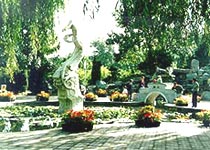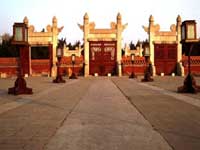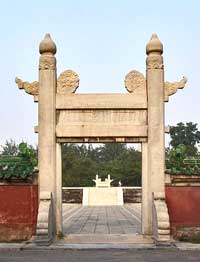| Tools: Save | Print | E-mail | Most Read |
| To the Moon and Back |
| Adjust font size: |
The The four temples were built in locations demarking the four cardinal directions, forming a square that surrounds and protects the The The four temples were built in locations demarking the four cardinal directions, forming a square that surrounds and protects the
In the past decades, bushes and fruit trees have been planted here. In 1969, a 180-meter-tall television-broadcasting tower was erected in the park, taking up about one-eighth of its total space, according to Wang Jun, an official with the Xicheng District Gardening Bureau. During the restoration project, many damaged parts were rebuilt, including the walls of the altar, the square white marble sacrificial platform, the sacrificial routes through the park and many ancient dwellings. The Opening hours: 6am-9pm Location: 6 Yuetan Beijie, Xicheng District. Buses to get there: 15, 19, 823. Tel: 6802-0940.
According to ancient Chinese belief, heaven is round, while earth is square. So, the This magnificent temple consists of five main buildings arranged on the north-south axis, with annexed halls flanking both sides. The Chinese government has listed the temple among the most important historical monuments under special preservation. The surrounding areas have become an open space for people to engage in leisurely activities. Since the late 1980s, traditional temple fairs have been held here regularly during the Chinese lunar new year. Opening hours: 6am-9pm Location: A2 Di'anmenwai, Chaoyang District. Buses to get there: 13, 27, 104, 108, 116, or take the subway to get off at Yonghegong to go north. Tel: 6421-4657.
It features expansive gardens and a small lake. A mural wall, the park's main scenic attraction now, was a piece of artwork created about 20 years ago to draw more sightseers. The tiled mural depicts sacrificial ceremonies for the sun in emulation of what was done on these grounds by Ming and Qing emperors. The park is also known for its blossoming lotuses.
Opening hours: 6am-9pm Location: 6 Ritan Beilu, Chaoyang District. Buses to get there: 1, 4, 28, 43, 57, 120. Tel: 8563-5038. (
|
| Tools: Save | Print | E-mail | Most Read |
 |
| Related Stories |
|
|
Product Directory China Search |
Country Search Hot Buys |


